A board game designer's web site
Copyright Eric Pietrocupo

E-Mail: ericp[AT]lariennalibrary.com
Components
Many people does not realize what can be done in print and play. The following page tries to make a list of the various things you can create.
Cards
This is one of the easiest component to create since it does not need to be mounted. You can also print it double sided directly on the card board that you cut afterward. The best card layout that you can use is by placing 9 card per sheet which are each 2.5" x 3.5".
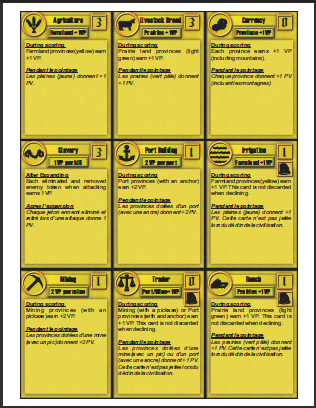 |
| 2.5" x 3.5" Card layout |
This is the standard poker size card, it is interesting to follow this standard because the cards will fit in regular card sleeves. You can now buy sleeves of different size, but they are still more expensive to buy and harder to find. So unless you need a very large amount of cards, or you have little information on each card, you should keep it standard.
It's important that the cards get sleeved since the ink on the card could fade away and stain the fingers since cards are hold in the hands most of the time. Sleeving is the fastest protection method. You can also easily print double sided cards as long as one side has undefined cutting lines.
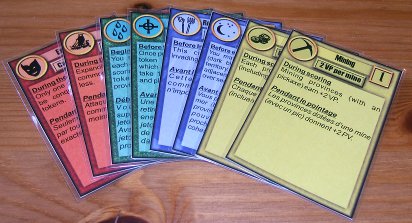 |
| Example of cards |
Tokens
You can create tokens of any shape and size, but I strongly suggest the rectangular shape because it is easy to cut and you can fit the highest number of tokens of on a page. Tokens must be mounted on cardboard or foam board so you cannot print them double sided. If you want double sided tokens, you need to stick it on the back of the board. Again, you will not be able to align them so one side must have undefined cutting lines. Here is an example of token sheet.
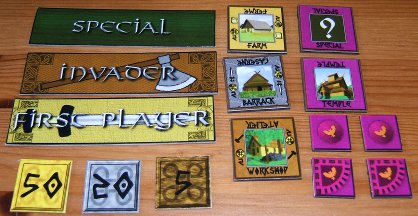 |
| Various Tokens |
Foldable tokens
It is possible to create thin tokens by printing both side on the same sheet, fold them, and glue them together. The disadvantage is that you must glue all tokens individually, or at least, one row at a time. This is very interesting for card board characters pawns.
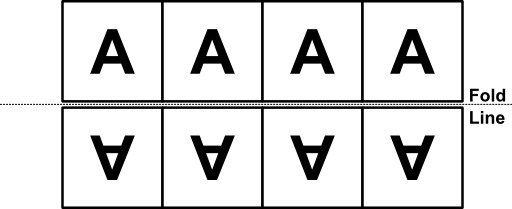 |
| Foldable token template |
Foldable 3D Pieces
You can also crease various kind of 3D pieces by folding card board. The easiest way to fold 3D pieces is by making triangular folds. But you can also make complete 3D foldable shapes like a cube. There are software that allows you to generate the foldable shape to create any 3D shape. Still, the more complex is the 3D, the more complex it will be to assemble.
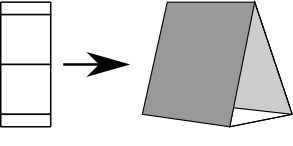 |
| 3D foldable example |
Maps, boards and Sheet
Many games have a central part called a board. This board can be constructed by joinning together multiple printed parts. Since margins around a letter page should be 1/4", it leaves a total space of 8"x10.5". This is the maximum size your board can be. Personally, for maps, I like using 8"x8" boards and make a modular map that can be built in different ways.
Most of the time you will like to mount your board on foam core or cardboard. If you make your board in multiple parts, you can tape the board together to make some sort of foldable board. In that case, some fold would require you to tape the cardboard together before sticking the printed board. That is the case for fold where the face of the board touch each other. Else for folds where the back touch each other, that is pretty easy to do. You just place a tape on the back.
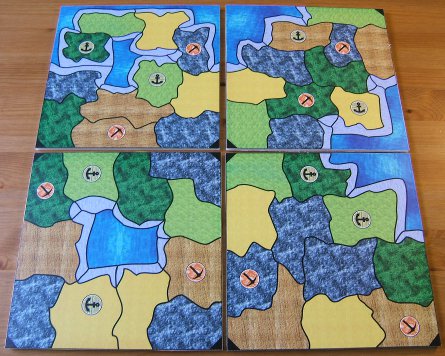 |
| Modular tilable Map |
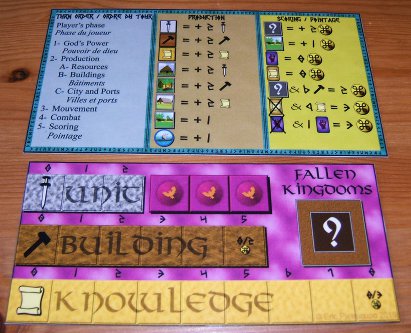 |
| Various Sheets |
Labels and chips
If you have a lot of tokens to assemble, it can sometime be a pain to mount and cut. Another solution would be to create circular labels that could be stuck in the middle of a poker chip. Poker chips are relatively easy to find, it creates an interesting solid component, it's easy to create double sided chips and it's fast to assemble.
The best way to cut the circular labels is with a punch, or by using pre-cut circular label sheets. Else you will need to cut them with scissors.
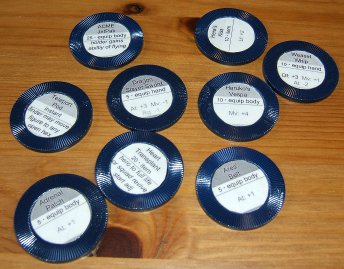 |
| Labeled poker chips |
So this is it for now. There are probably a few other components you can do in print and play. People have a lot of imagination and can come up with unusual stuff. This page was just to give you an idea of what could be done. I'll add stuff as new ideas comes in.
<< Introduction and Basic Layout | Table of contents | Border and cutting lines >>
Powered by PmWiki and the Sinorca skin